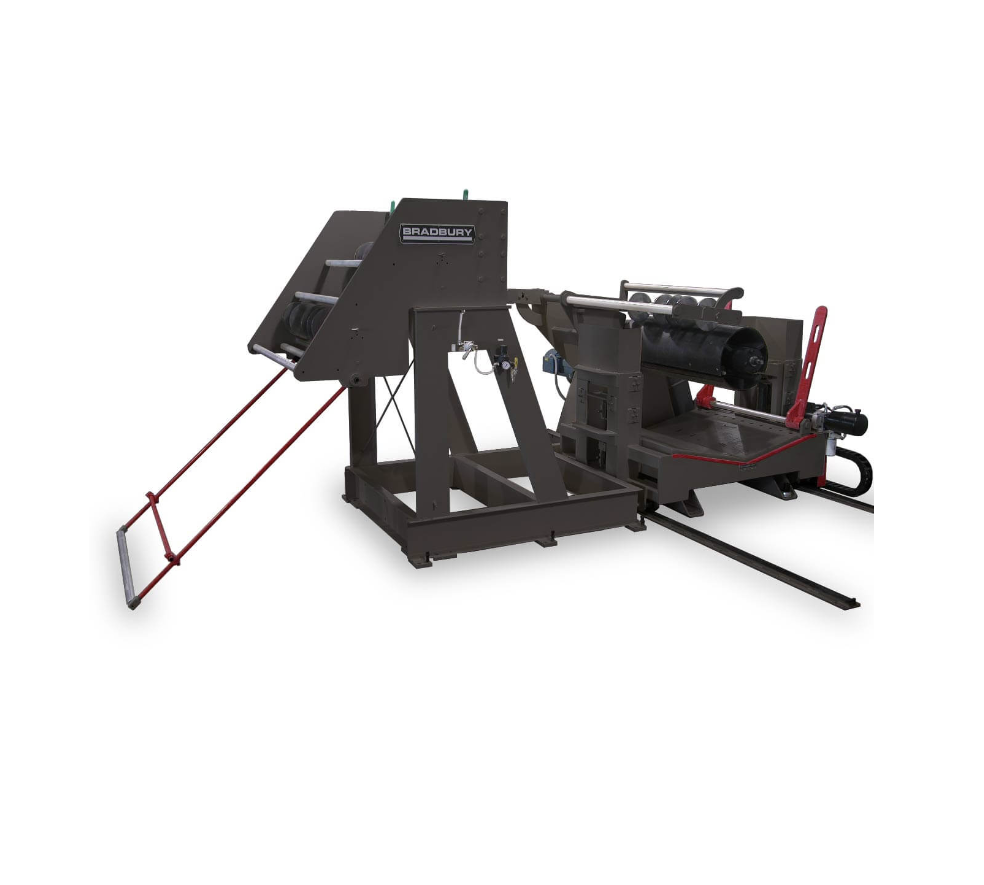To express an interest in this machine please submit the form below.

Not Sure What Machine You Need?
Select Your Profile, We'll Match It
Choose your desired profile drawing, and let Machine Matcher connect you with the best roll forming machine tailored to your needs.
Browse Profiles
A Tension Stand and Recoiler Machine is an essential piece of equipment in the metal processing and roll forming industries. It is designed to handle coiled metal sheets or strips, ensuring precise recoiling while maintaining proper tension throughout the process. The tension stand applies controlled force to the material, enabling smooth unwinding and rewinding operations, while the recoiler ensures the metal is recoiled into a compact, uniform coil.
These machines are indispensable for industries such as automotive, construction, appliance manufacturing, and metal fabrication, where consistent and precise coiled material handling is critical.
| Parameter | Details |
|---|---|
| Material Type | Steel, Aluminum, Copper, Stainless Steel |
| Coil Width | 300mm - 2000mm (customizable) |
| Coil Thickness | 0.3mm - 6.0mm |
| Recoiler Capacity | Up to 25 tons |
| Line Speed | 20m/min to 60m/min (adjustable) |
| Tension Control | Hydraulic or Pneumatic |
| Recoiler Mandrel | Expandable, with hydraulic actuation |
| Power Supply | 220V/380V/480V, 3-Phase, 50Hz/60Hz |
| Control System | PLC with HMI for precision and user-friendly interface |
| Motor Type | Servo motor or AC motor |
| Safety Features | Emergency stop, overload protection, safety guards |
| Machine Frame | Heavy-duty steel |
Q1. What industries benefit most from a Tension Stand and Recoiler Machine in the USA?
A1. Industries such as automotive, construction, HVAC, metal roofing, and appliance manufacturing benefit the most, as these require precise handling of coiled materials.
Q2. Can this machine handle both ferrous and non-ferrous materials?
A2. Yes, the machine is designed to handle a wide variety of materials, including ferrous (steel, stainless steel) and non-ferrous (aluminum, copper) metals.
Q3. How can I determine the right machine specifications for my needs?
A3. Consider factors like the material type, width, thickness, and coil weight you will be processing. Consulting with the manufacturer can help tailor the machine to your requirements.
Q4. What safety features are included in the machine?
A4. The machine includes emergency stop buttons, overload protection, safety guards, and alarms to ensure operator safety during operation.
Q5. How does the tension control system work?
A5. The tension control system uses hydraulic or pneumatic force to apply consistent tension to the metal strip, ensuring smooth unwinding and recoiling.
Q6. Is the machine compatible with automation systems?
A6. Yes, most tension stand and recoiler machines come with a PLC system that can integrate with automated production lines for seamless operation.
Q7. What are the common maintenance issues to watch for?
A7. Common issues include wear on the hydraulic seals, tension inconsistencies due to misalignment, and electrical faults in the PLC system. Regular maintenance can mitigate these problems.
Q8. How long does it take to install the machine?
A8. Installation typically takes 1-2 weeks, including setup, alignment, and testing, depending on the complexity of the production line.
Copyright 2025 © Machine Matcher.